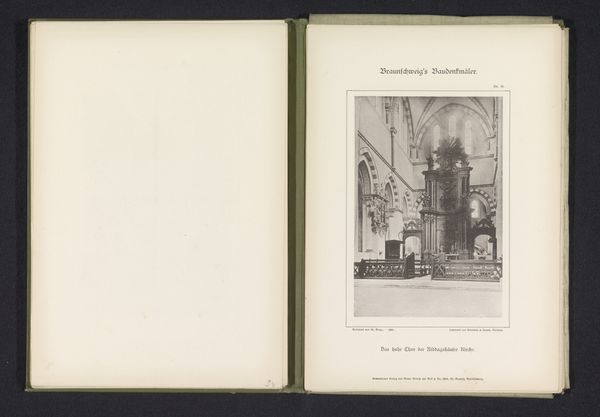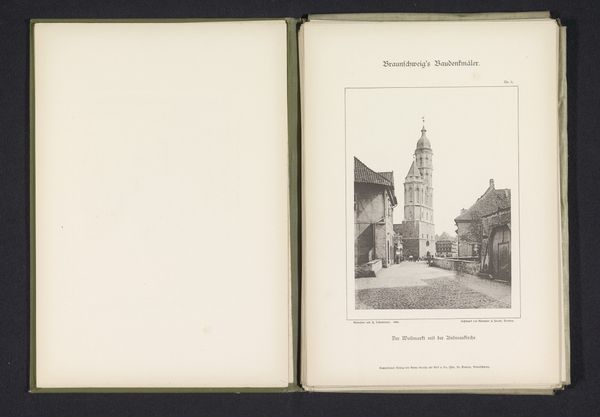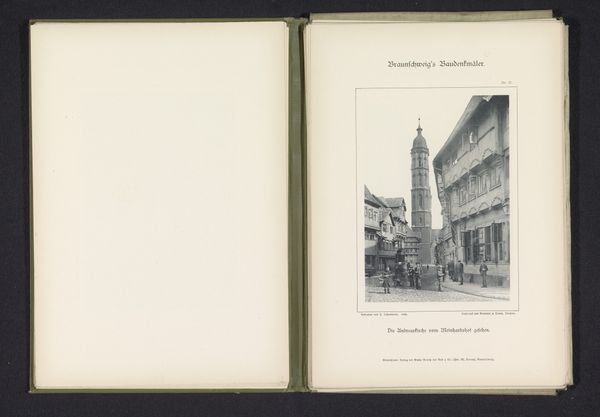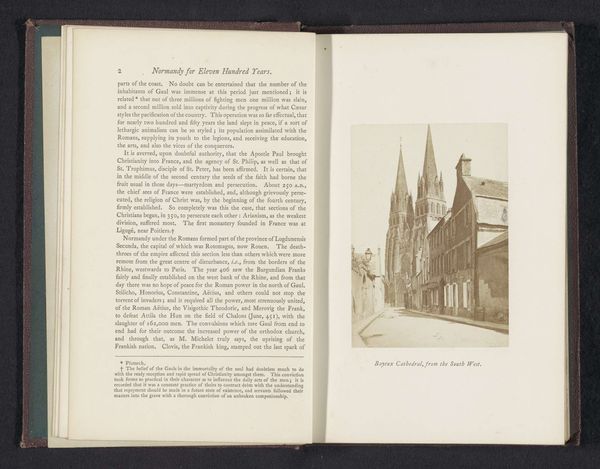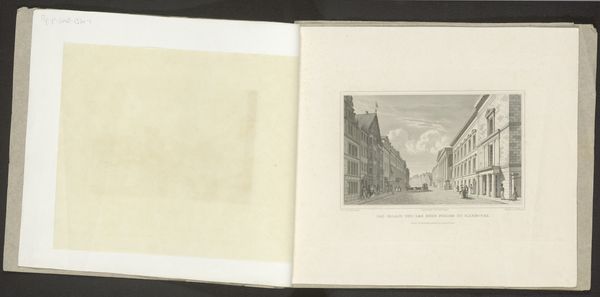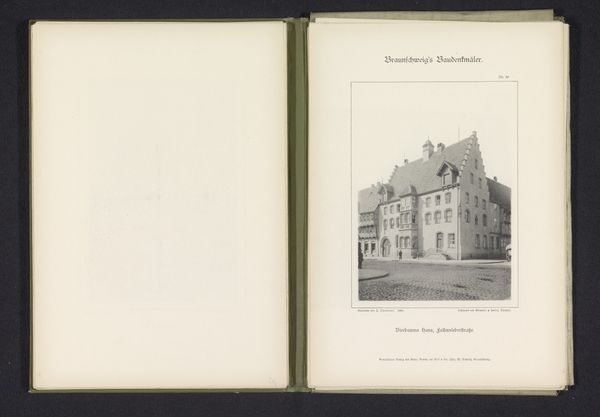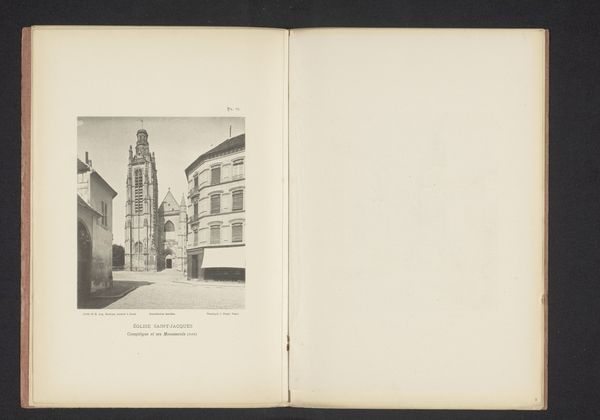
print, photography
#
16_19th-century
# print
#
photography
#
cityscape
#
street
Dimensions: height 156 mm, width 106 mm
Copyright: Rijks Museum: Open Domain
Curator: Here we have "Gezicht op de Wendenstra\u00dfe en de Sint-Catharinakerk te Braunschweig," a print dating back to 1892 by J. Schombardt. Editor: My first impression is how grounded yet aspirational this cityscape feels. The stark print brings forth a quiet solemnity, emphasizing the imposing yet graceful spire. It's about earth and sky. Curator: Indeed. That soaring church dominates, but it’s inseparable from the earthly street scene below. This composition highlights not just the architecture but how faith integrates into daily life, informing its physical layout and visual vocabulary. Editor: You see faith; I see construction, literally! Look at the labor implied, the hewn stones and arranged masses. Consider the communities required to raise that spire, to sustain that visual and symbolic weight, especially within a dense urban context that relies so much on its means of construction. Curator: The photograph, being black and white, heightens that contrast. Light and shadow become almost moral concepts, framing both the splendor of the cathedral and the relative grayness of daily routines. The figures almost appear to exist at the margin of something immutable and spiritual. Editor: Well, the materials also hint at consumption and trade. This image makes me think about the economic conditions that allowed for these stone structures to flourish. What sort of local or international trade agreements were made to realize them? And for whose benefit was all this construction happening? Curator: It seems Schombardt aims to capture not only a moment, but an entire worldview. The photograph preserves cultural memory. It asks, "What remains, and what ideals should guide us forward?” Editor: Perhaps! And perhaps the enduring quality of those stone buildings outlives many economic models and agreements—a testament to material longevity in an ever-changing world. This picture presents more than just an impressive view; it’s an illustration of tangible human effort within specific socioeconomic currents. Curator: I'll agree on that note. This piece offers a lens through which to contemplate how spaces, even those shaped by beliefs, become imprinted with the history and work it has taken to establish and change them over time. Editor: Precisely, an insightful study into place, belief, and production.
Comments
No comments
Be the first to comment and join the conversation on the ultimate creative platform.
